We talk to Elwira Dziewa, the President of Autorobot-Strefa, and Bogdan Besala, the company’s Chief Technologist, about the situation in the automotive industry, the implementation of projects under time pressure and the production of lines on which 100 different body variants are produced.
Is the automotive industry the main activity of Autorobot-Strefa?
E.D. : We specialise in the implementation of complete lines for welding car bodies on a turnkey basis: from the design phase to the execution and commissioning at the customer’s plant. We take part in the entire project cycle, exchanging knowledge and experience with the customer.
Our biggest customer is the Fiat Group. It is a partner with whom we have a long-term relationship. We are involved in joint projects at a very early stage of their development. We take part in the feasibility study and advise on the placement of welding points or their distribution between subsequent operations. This enables us to prepare an offer that is better tailored to their needs.
Another customer, the French company Actemium, systematically commissions us to work on projects for the French brands Renault and Peugeot and for the aeronautics giant Airbus. We collaborated with them on a major project to equip the assembly hall for the cabin cladding of the Airbus A350. We also work directly on a smaller scale for customers such as GM, VW and Audi.
B.B.: It is always a collaboration aimed at finding the best solution for the customer and for us. We work together to exploit all the opportunities and ideas that arise so that our product can keep up with the constant development that is the norm in the automotive industry.
We develop together with our customers and where they invest, we are there with our implementations. At the moment, Fiat is tending to grow in the more expensive car segment. This is where sales are growing and new investments are needed. So we are actively involved. We are also successfully implementing lines for the production of new Maserati models in Italian factories.
The collaboration with Fiat resulted in the award of the title of Capital Equipment Supplier of the Year by the Fiat Chrysler Automobiles Group.
ED: The Best Supplier 2014 award received by Autorobot is one of the results of our collaboration. The rationale underlines the best-in-class service level, taking into account the exceptional quality and reliability of the supplied systems. It was emphasised that our company has always supported the technology with effective solutions, ensuring the highest standard of bonnet and tailgate production processes. For the employees, this is not only a source of pride, but also an obligation.
BB: The Fiat Group is entrusting us with more and more of the welding equipment for new models. We recently delivered 24 production lines for the Fiat 500L to the plant in Serbia. It was a big job and, as usual, it was done under time pressure. Everything started on time, the factory is up and running and the cars are selling well. It was a challenge for the logisticians and the designers because of the need to use a lot of resources in a short time, but in terms of technology and production it was a typical job for us.
Where are your customers investing now?
BB: Autorobot is currently carrying out partial line projects for Fiat for four new models that will go into production over the next two years at the Tofas plant in Turkey, the Betim plant in Brazil, and the Cassino and Mirafiori plants in Italy. We received this last implementation as a natural continuation of the lines for the Maserati Quattroporte that were successfully implemented two years ago. These solutions worked perfectly, so we are still working.
ED: In general, the situation in Europe is stable and it will not be the fastest growing market in the world in the coming years. Interesting investments are being made in Turkey, Brazil and the Asian market. More and more popular cars are being sold there, and we want to be part of that.
In Poland we do not sell too many lines. Car companies’ investments in new models are limited, but we plan to increase sales to smaller companies – automotive suppliers, which are still growing in Poland and have some potential. We estimate that the domestic market is growing slowly. We have investments from Opel and VW, and we are curious to see how the situation will develop with the expected Fiat investment in Tychy. The coming year can explain a lot.
How do your body welding lines come into being? How has Autorobot coped with the crisis?
ED: In 2009, the automotive industry stopped investing for a while. We felt it too, which is why aeronautics appeared in our activity. We decided to take advantage of the opportunities offered by this promising industry and have since carried out several interesting projects in this field. In collaboration with Actemium, we have equipped the Airbus hangar with, among other things, assembly and transport equipment for the A350 cabin cladding, we have manufactured equipment for the assembly of the air intake to the engine and engine wing connectors. This is a different scale of instrumentation – spacious, multi-storey stations, the precision of which must be no less than that of instruments for the automotive industry. It is a very interesting experience that we hope will pay off in the future.
ED: In any factory, a car is produced in several stages that form a certain closed technological cycle. We always talk about the press shop, the welding shop, the paint shop and the final assembly. Welding is our domain. Production here is organised in lines on which individual assemblies are produced and then assembled into a body. So we have lines for making the chassis, sides, roof, doors, etc. The lines on which the individual assemblies come together to form the geometry of the car are very important. How all the parts will work together depends on the quality of such a framework.
The entire production cycle of the line is carried out in consultation with the customer. He gives us assumptions such as: production volume, degree of robotization, line automation, layout, i.e. a place in the hall to be set up. All these assumptions have to be met in order to stay within the budget and the deadlines. It is never easy, you always have to act efficiently, aware of the consequences of the solutions adopted on the speed, quality and cost of future production.
BB: The process is complicated and requires a lot of experience. You have to listen to the client’s assumptions, because the achievement of certain set parameters can cause complications in the later stages of the project. This is why the initial conceptual stages require the participation of top-class specialists, people who are open to new solutions, which often need to be tested in practice, not just in theory.
So you have to take into account a large number of complex elements each time?
ED: An important feature of the lines currently in production is their flexibility, multi-model designation and efficient retooling to maintain production continuity. The use of robots on the line is as high as possible so that they are not idle. They can be used for transport, transfer between successive operations, welding or precise positioning. Their software is used to control not only the work of the robot itself, but also the entire work cell, where the moving and interchangeable parts of the station interact with the robots.
In modern car factories, new models are introduced every few years, and at the same time many versions of the same car are created. Therefore, an important feature of the production line is its flexibility, understood as the ability to quickly change the model being produced. In practice, if you look at the line during production, you can see the whole cross-section of the models sold: cars in different versions are next to each other and the line adapts to their production, the instrumentation changes during the production cycle, everything is monitored by automation that ensures the execution of the programmed production plan. We have our own proprietary solutions in this area and we are developing them.
BB: One of the most interesting projects in recent years has been the design of a new van for IVECO. It was a real challenge for us because of the size and complexity of the stations. The stations were over 10 metres long and the body had over 100 versions for which lines had to be prepared. This resulted in the need to design many removable sliding elements that were used depending on the version. The lines were robotic, fully controlled by automation. In addition, it was necessary to use the tooling from previous projects that already existed in the customer’s factory, which always carries the risk of not fitting all the elements. We carried out a test run at our premises. We encountered a number of logistical problems along the way, but in the end the lines were smoothly transferred to the customer and restarted. This gave them the shortest possible production downtime and made us realise that we need even more space for this type of project. The new hall is already up and running, we are proud of it, and we are looking forward to another project of this kind.
| Do you know that… The next lines created by Autorobot are implemented in a similar way, although they contain many variables. In the concept and design phase, based on the preliminary design of the car body, optimal solutions are worked out with the car manufacturer to ensure that the expected production volume can be achieved in the part of the hall dedicated to it. These arrangements often change. The shape of the car also evolves during the project. This is why the work of the Gliwice company involves a continuous modification process. “Once the design phase is approved, production begins. The lines are divided into several or a dozen stations, where the elements that make up the entire body are successively added. We start production of the line with standard elements even before the design is finished. To create the station, all its elements pass through the welding shop, machining, painting, mechanical assembly, automation assembly and control. The finished stations in a fixed order go to the customer’s factory, where we line them up, program the robots, carry out tests, commissioning and initial production,” says Bogdan Besala, the company’s chief technologist. |
Are there a number of production steps involved in building a line?
BB: Our lines are made up of hundreds of smaller components, some of which we make ourselves and some of which we buy as commercial items. We have most of the necessary technological processes, starting from sheet metal cutting with a programmable gas/plasma torch and a water jet cutter, through welding, mechanical machining on typical machine tools (the largest boring machine accommodates objects with a size of 9 × 3.5 m), painting, mechanical assembly, automated assembly, 3D control.
We carry out almost the entire production process in-house, which is very important because of the experience that remains with us. It is also easier for us to monitor the progress of production. We only outsource large welded structures and specialised thermo-chemical treatments to our partners.
The integrated ERP system for company management monitors the entire production. All processes in the company run through this system, data is entered on an ongoing basis, and we also receive ongoing reports on progress, project costs, business, human resources and the financial situation of the company. This allows you to react immediately and keep your business under control.
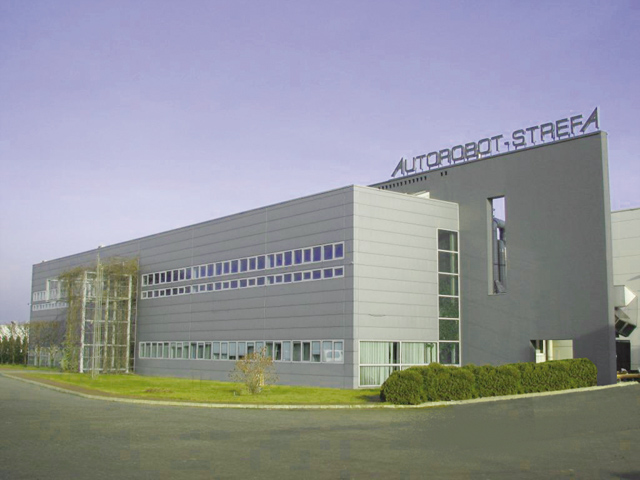
The design office is important in this case. What does it do?
BB: Our design office works closely with the Italian company O.L.C.I. Engineering, which employs specialists with many years of experience in our industry. It designs the hall layout, line layout, 3D mechanical structures and 2D drawings, installations and automation. It also carries out robot simulations. It is equipped with the necessary standard automotive software, i.e. Catia, Robcad, Process Simulate systems.
In Gliwice we design smaller structures, modify and program CAD/CAM machine tools. We are also in the process of organising an installation design office. This will provide installation designs for all our lines, including automation, electrical and pneumatic installations.
ED: In addition to complying with all automotive and environmental standards, to be present on the market you have to offer more than your competitors. Our design office always allocates a certain part of the budget to research and development activities. We offer patented, proven solutions that are ahead of the competition in terms of reliability, price and flexibility.
What technical solutions are you currently introducing into your offer?
BB: In one of the current projects we will be using technology developed for the aluminium boot lid. This requires the use of special coatings for the working parts of the instruments, because aluminium is a special metal – lighter and less durable than steel, but it sticks to the tools and causes them to wear more quickly.
ED: One example of a new organisational approach is the simulation of the layout of the target production hall where the line will work. This is a way of saving commissioning time at the customer’s site, which is often under the pressure of ongoing production and access to the line is only possible during a repair break or at the weekend.
For these reasons, can the company be optimistic about the future?
ED: Our location in Poland is optimal in the context of the European market – we have high quality and average prices. The lines and equipment we produce are used in car factories in almost all European countries.
In order to enter the market, you first have to prove yourself in smaller projects. You always have to sell an idea that gives you an advantage, because technical thinking is the most important thing. Of course, price and delivery time are also important. Experience is invaluable because it allows you to make the best use of proven solutions and to work efficiently and cost-effectively. If the customer’s problems are solved effectively, you can always count on them being taken into account in subsequent projects, because the customer knows what to expect and appreciates peace of mind and confidence.
| Did you know that… An important part of the company’s activity is to propose new technological solutions. “There are several solutions that have been recognised by Fiat as standard, i.e. required for use on new lines, including our devices for crimping the edge of the engine cover, the boot or stations for removing elements from the line for periodic inspection. Our central mono-geometry station, i.e. the place where the floor of the car meets the sides and the roof to form the body, is also working very well” – says Elwira Dziewa, President of Autorobot’s Management Board, and adds: “We are currently implementing an innovative programme that will involve all employees in development work. The idea is that the ideas of employees in any position create the value of the company. They should be collected and implemented for the benefit of the company and their authors”. |


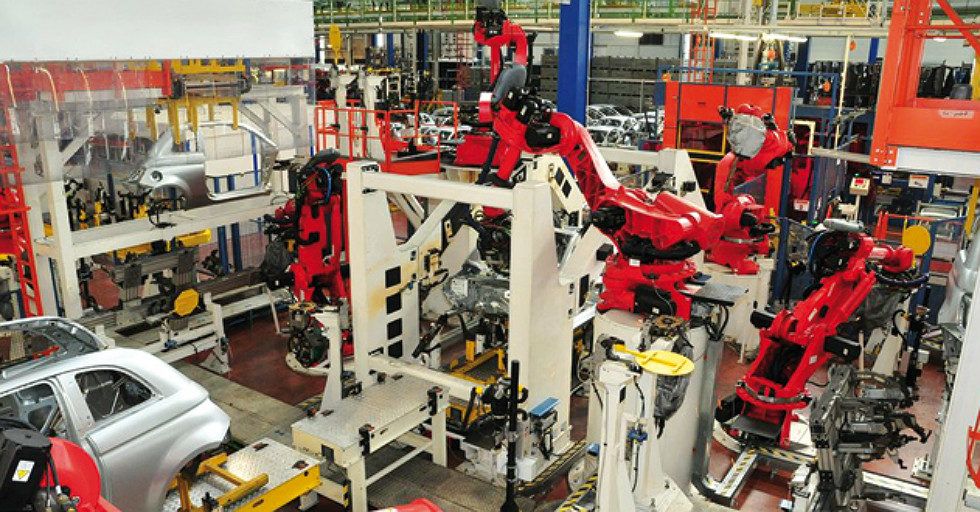

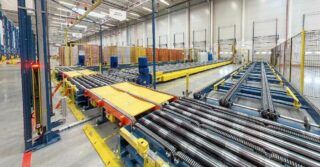
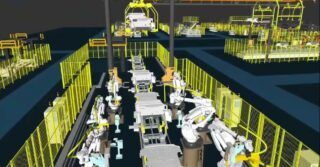
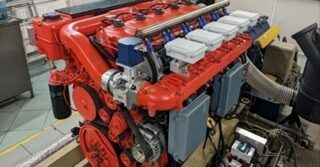
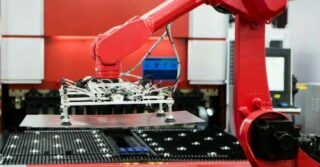
![Forecasts, Opportunities, and Challenges for the Polish Industry in 2024 [ANALYSIS] Forecasts, Opportunities, and Challenges for the Polish Industry in 2024 [ANALYSIS]](https://industryinsider.eu/wp-content/uploads/xIndustry-40-320x167.jpg.pagespeed.ic.o8zijDQlIJ.jpg)